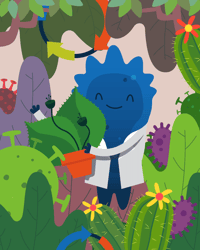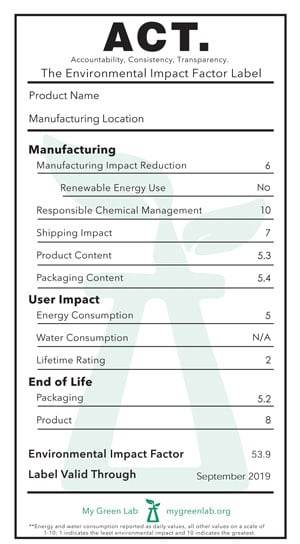 New ideas and approaches are encouraged in science. It isn’t surprising that new ideas are also popping up in how we manage lab waste. This is the second in a series of posts on bringing sustainable practices in the lab. The first post focused on streaming some lab waste for recycling- a process that’s integrated into waste management in our day-to-day lives, but not as well-integrated into our lab lives.
New ideas and approaches are encouraged in science. It isn’t surprising that new ideas are also popping up in how we manage lab waste. This is the second in a series of posts on bringing sustainable practices in the lab. The first post focused on streaming some lab waste for recycling- a process that’s integrated into waste management in our day-to-day lives, but not as well-integrated into our lab lives.
Read on to learn about some creative approaches to lab sustainability, and find ways to further reduce our consumption beyond recycling.
 Choosing more sustainable products
Choosing more sustainable products
Recycling is great for rerouting waste from the landfill, but what about all the manufacturing steps that happen before you even receive the product? How can we consider the environmental impact of those processes? Who even regulates them? You may be surprised to learn that it hasn’t even been 50 years since the creation of the United States Environmental Protection Agency, which started making regulations such as preventing manufacturers from dumping hazardous waste directly into the oceans.
As consumers, we can choose products that are better for the environment without sacrificing performance or quality. To do this, we can use the ACT label, which is an eco-nutrition label for laboratory products that emphasizes Accountability, Consistency, and Transparency. This label scores products by their environmental impact on a scale of 1-10: the lower the score, the lower the environmental impact in terms of manufacturing, energy, and water use. ACT labels are obtained by independent audit, and companies need to pay to obtain them. There’s a database of labels on the My Green Lab website, but if you don’t see one, be an ACTivist and encourage companies to obtain these labels!
Reusing plastic
Historically, scientists washed and reused materials such as glass pipettes or inoculation loops. While single-use is now a popular theme in life sciences, some of these plastics are high grade and can be washed and reused. This might sound risky in terms of contamination, but consider flow cytometers. These fluidic machines handle biological samples and are cleaned between each use. You wouldn’t throw away your FACS machine after a single use.
So how about washing and reusing pipette tips in a high-throughput and efficient way? Grenova, for example, offers automated, benchtop, high throughput washing devices that are compatible with a variety of pipette tips. This is part of a cultural change in how we approach waste that needs to be supported at all levels. Disposables are an accepted part of lab culture, but with the right incentives (for example, by grant agencies), we can shift toward a more sustainable one. The math on this is pretty simple: wash your tips once and you cut your tips cost in half, not to mention the amount of plastic you’ve saved.
Repurposing regulated medical waste
Regulated medical waste (RMV), which we collect in those red biohazard bags, typically is destined for a landfill. However, Triumvirate Environmental developed Red2Green, a program that uses this waste as plastic lumber for things like truck bumpers, plastic adirondack chairs, and synthetic turf. I was truly amazed by this. Instead of sending your RMV to the landfill, it’s collected and transferred to the Red2Green processing facility, where it’s sanitized through an EPA-approved process and no longer considered hazardous. Then, they use this material to produce various grades of plastic lumber and distribute it to industrial and residential markets.
Rethinking our approach to lab waste is something we all need to do. Remember, it was only 50 years ago that we routinely dumped toxic waste into the oceans, a practice which we now realize is a major environmental disaster. We should continue to examine our behavior and innovate solutions and practices to meet higher environmental standards.
Find some easy action items on our other article in this series!
Additional resources on the Addgene blog
- Learn about recycling initiatives for the lab
- Subscribe to the Addgene blog
- Find lab tips for your research
Resources on Addgene.org
- Sign up for our quarterly newsletter
- Help other scientists save resources by sharing plasmids
- Find plasmids at Addgene
Topics: Addgene News





Leave a Comment